 |
 |
LANTANA CAMARA L. - WILD SAGE.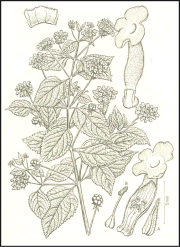 Common name
Common nameLantana, wild sage, white sage, sage, shrub verbena, big sage, cambara de espinho, korsu wiwiri, cariaquillo, yellow sage. Family Verbenaceae (Verbena family). Overview Wild sage is a small tropical perennial shrub with a woody stem that can grow up to 10 feet tall. The serrated leaves are aromatic. The stem and leaves are hairy; the clustered flowers of wild sage vary from white to purple, white yellow, red pink, orange or blue are in between. There are many varieties and hybrids of scrub verbena available. Lantana blooms year round and attracts butterflies for pollination to the garden. The berry-like fruit is juicy, first green later black-purplish; poisonous for animals and for humans as well, if overdosed. The plant contains lantadene A and B and other toxics. However, the ripe berries are eaten by school children in Surinam, without harm to them. Lantana repels other plants and other groups of organisms such as insects. The leaves are used to relieve itching. Other uses are against flu, colds, coughs, fevers, yellow fever, dysentery and jaundice. The roots are used for gonorrhea. Suriname's traditional medicine The leaves of wild sage are used against fever; an infusion is used against scabies. The leaves are antiseptic and also used for cuts and ulcerate. Visit our TINCTURE page. Hardiness USDA zone 8 - 11. Propagation Seeds and cuttings. Culture Full sun, well drained sandy soils, but grows also well on poor soils. It has some salt tolerance. Occasional pruning helps keep wild sage neat. It is also a great container plant and can be used for mixed beds and borders. Although lantana is killed at 28° F., it quickly grows back! |
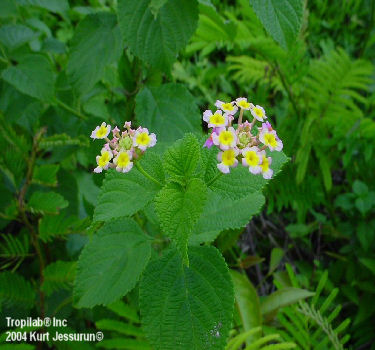

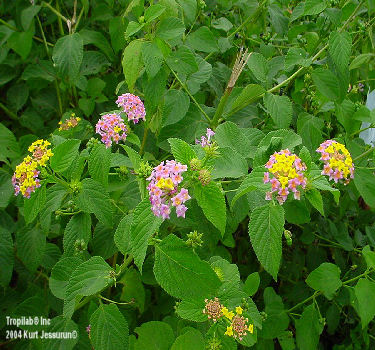
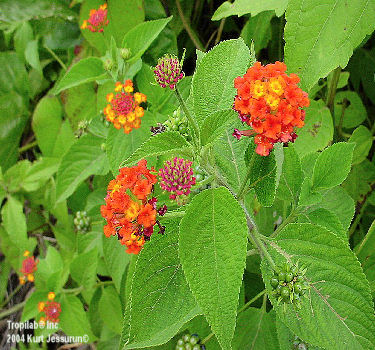
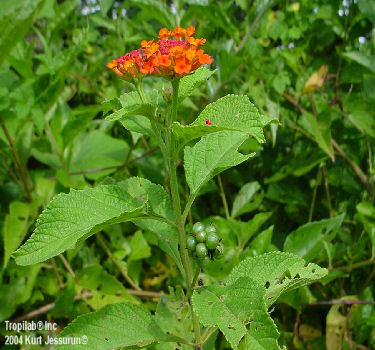
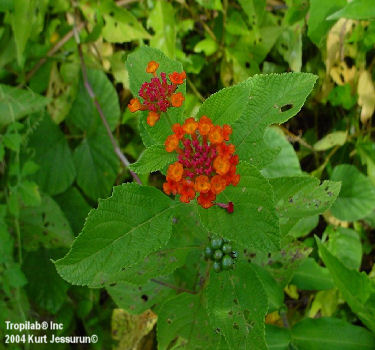
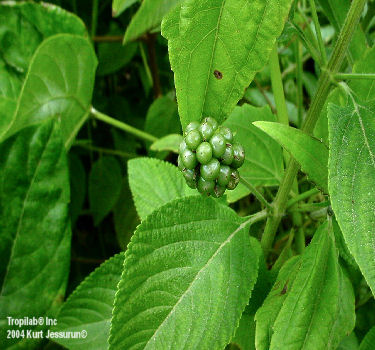

|
For the right freight rate, shipping charges, conditions and delivery service, please visit Webstore page! |